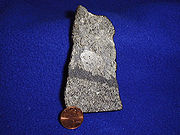The research relies on a colorless solution based on the substance fluorescein (fluorescein) which glows green in contact with palladium, which occurs in nature together with platinum

The painstaking process of identifying toxic forms of platinum and palladium, mixed with the essential form of platinum present in certain pharmaceutical preparations, could be reduced to a simple single step. This is what researchers from the University of Pittsburgh report in the scientific journal "Journal of the American Chemical Society" (JACS).
A fluorescent solution developed in the laboratory of Kazunori Koid, professor of chemistry in the School of Arts and Sciences at the University of Pittsburgh, glows bright green when it comes into contact with toxic forms of palladium and platinum marked by the formulas known as Pd(II) and Pt(IV) (palladium- two and platinum-four, respectively). These two elements normally break down into the form of platinum known as Pt(0) (platinum-zero) which is used in medicine to capture various active oxygen species responsible for inflammation and other diseases. However, trace amounts of palladium-two and especially the more toxic form of platinum-four remain in the mixture and may even pose a health risk.
In order to remove the Pd(II) and Pt(IV) forms from the mixture, preliminary removal of metals and other impurities is required. The new method provides a quick, easy and cheap alternative, he notes. In addition, existing testing methods are unable to detect the toxic form at concentrations as low as two thousand parts per million (ppm). His method is able to detect residues at a concentration as low as 2 parts per million.
"Our methods do not require any prior preparation, just add the solution to the sample. Our method detects even trace amounts of the toxic forms within hours instead of days. The method will be able to reduce the drug development time by whole weeks and will help in the production of safer products."
The researcher started his venture after a large pharmaceutical company contacted him regarding a study he published in the same journal in 2007 regarding a fluorescent indicator that detects the presence of platinum and palladium in soil samples. The research relies on a colorless solution based on the substance fluorescein (fluorescein) which glows green in contact with palladium, which occurs in nature together with platinum. The new detector uses the same solution, albeit in a slightly different form.

2 תגובות
who will? Yossi Bobalil?
A new millionaire is born